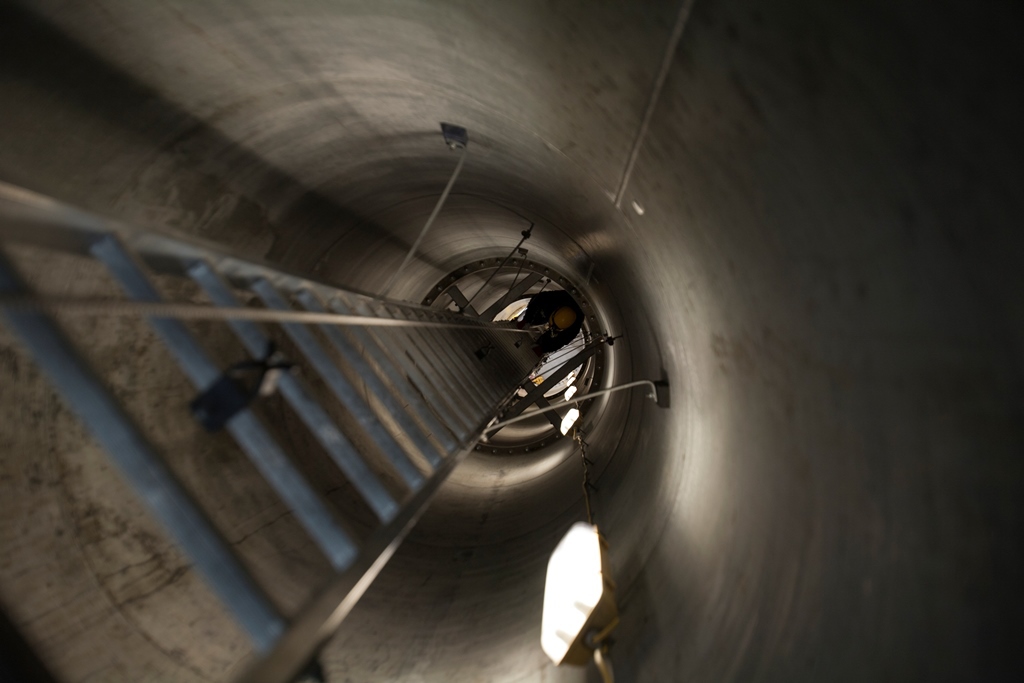
Kelly Rose
Editor

Kelly Rose
Editor
Jim Adams, UK energy and utilities sector sales manager at Capital Safety examines five key considerations for rescue and descent systems.
According to Health & Safety Executive (HSE) statistics, across the whole of industry, falls from height accounted for nearly three in 10 fatalities in 2013/14.
While the wind energy industry is not singled out in HSE statistics, it is clearly evident that in an environment where turbine installation and maintenance requires working at extreme heights, there is an elevated degree of risk.
The wind power industry is highly risk-aware, but no matter how well trained or experienced construction and maintenance workers are, ensuring that they have the right equipment to stay safe at height has to be one of the main considerations for health and safety managers.
Taking account of the fact that workers are equipped with the necessary fall protection equipment, health and safety practices have also to account for how, in the event of a fall that is arrested, the fallen worker can be rescued as soon as possible. That is why rescue is one of the most important areas of fall protection in the wind energy industry. The difference between a non-injury fall and one resulting in serious harm is directly related to how quickly a worker is rescued. The longer a fallen worker remains suspended, the worse the injuries sustained might be.
To ensure a fallen worker is retrieved or lowered to the ground quickly and effectively, rescue and descent devices must be an integral part of fall protection equipment for all personnel working on wind turbines. Equipment needs to offer the capacity, versatility, speed, portability and ease of use and there are five key considerations in its specification:
Capacity
Equipment needs to have the capacity to handle the load required. For rescue and descent devices, this means making sure that equipment is rated to an appropriate weight capacity for the technicians using it. Specifically, for rescue and descent systems, the equipment should be rated for a two-person load that can accommodate up to 281kg to ensure that both victim and rescuer are safely supported.
Speed
In an emergency rescue or evacuation, every second counts. Rapid descent, which should be available for multiple users in the event of an emergency, is an essential. In situations where it is imperative to reach the ground as quickly as possible, fast and reliable escape devices are needed. For added security, safety and peace of mind, devices with automatic descent speed control and braking systems should be specified.
Function
In an emergency, simplicity of equipment is key, as speed can be hampered by complicated rescue devices. Fully automatic, hands-free rescue and descent systems that are user-friendly and require minimal training provide a worry-free solution. Intuitive, easy-to-use equipment that enables workers to descend safely or offer rescue or assistance to other workers is potentially life-saving.
Lightweight design and durability
In an industry that operates in sometimes harsh environments, it is inevitable that safety equipment can be subject to a degree of abuse. In the wind power industry it is particularly important to invest in safety equipment that is fit-for-purpose. Lightweight, compact rescue and descent units made with durable cast-aluminium components are able to stand up to those conditions commonly associated with the industry.
Versatility
Both in terms of value and performance, high-quality rescue and descent equipment with multiple functions and options offer the optimum solution. Options such as rope length, lifting handle, ladder bracket and a humidity case give equipment the flexibility to suit a variety of site requirements. The best, most versatile, systems offer the choice of controlled descent, evacuation or assisted rescue with lifting capabilities.
When it comes to fall protection and rescue, there is no margin for error. In the high-risk environment of wind turbine construction and maintenance, safety considerations are paramount. That is why it is essential to ensure that your height safety equipment is tailored to the work environment, the tasks being performed and the capabilities of the on-site workforce. By selecting fall protection equipment that incorporates the right rescue and descent devices you are keeping your workers safe whenever they work at height.






5A Merse Road
North Moons Moat
Redditch
B98 9HL
UNITED KINGDOM
0800 99955500